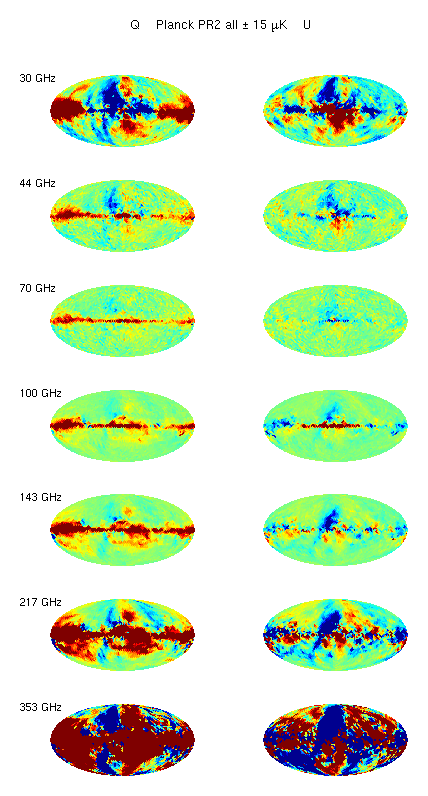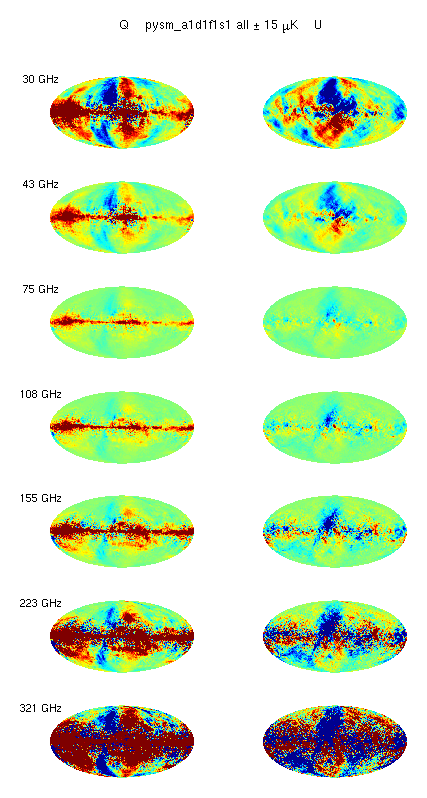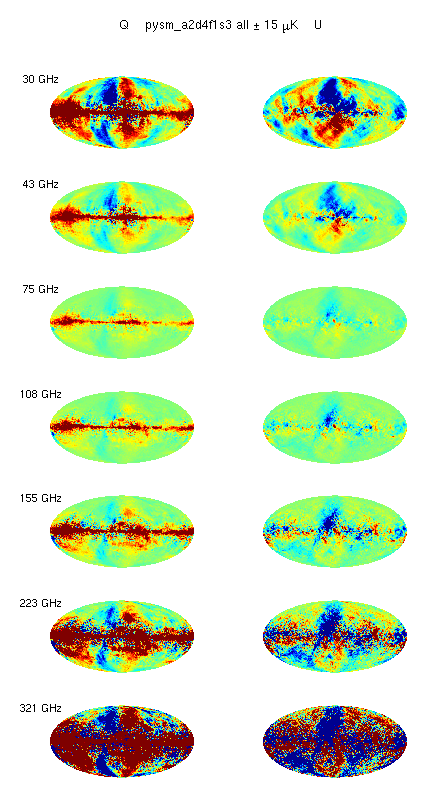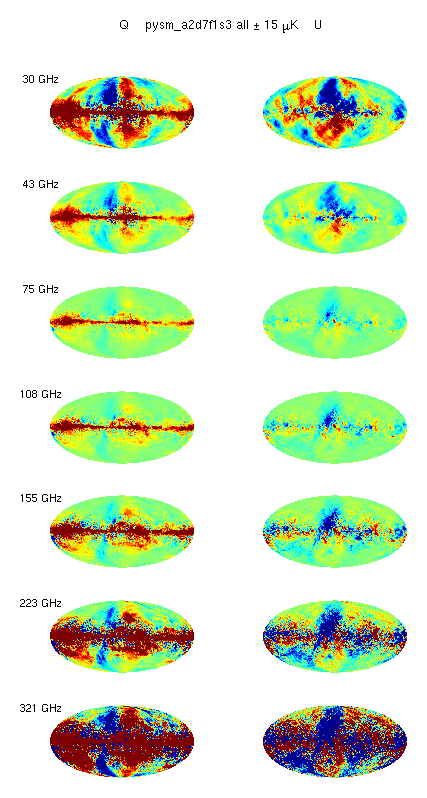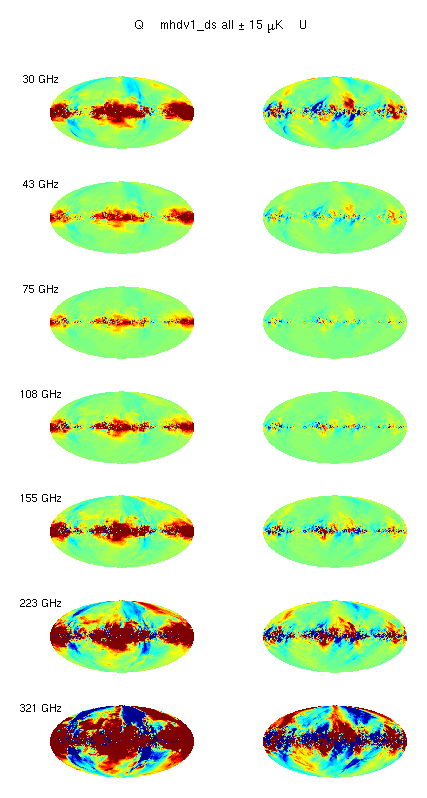This is an old revision of the document!
Apr 24 2018, Clem Pryke
For CMB-S4 project we have made simulations using a number of different foreground models plus lensed-LCDM, noise and tensors. These are described at Data challenge summary page and in a series of logbook postings.
I have exploited this work for PICO to make equivalent sims.
Everything below is available on NERSC under /project/projectdirs/pico/
I first made PySM input maps for the PICO band centers as listed in the v3.2 spreadsheet at imageroptions. I did this for delta function bandwidths to keep things simple. Everything is nside=512.
Under sky_yy we have the sky models where yy designates the sky model number:
- 91=PySM a1d1f1s1
- 92=PySM a2d4f1s3
- 93=PySM a2d7f1s3
- 96=Brandon's MHD model taken from /global/homes/b/bhensley/mhd_maps/maps_v1 on 180424
Under expt_xx we just have single file 90/params.dat which specifies the instrument parameters for this round as taken from the v3.2 spreadsheet.
Under data_xx.yy we have the sets of simulated experimental maps. 90.00 contains the lensed-LCDM (llcdm), noise (noise) and tensor (tenso) components for each band. Noise levels are also as per the v3.2 spreadsheet. The signal components have beam smoothing applied with beam widths as per the v3.2 spreadsheet. There are also combined lLCDM+noise+foreground+tensor maps (comb). These come as four flavors. Straight “comb” has full lensing signal. The “comb_AL” variants have the lensing signal artificially suppressed to the given levels of lensing power. So “comb_AL0p15” is the amount of lensing PICO is supposed to have post de-lensing. “comb_AL0p1” and “comb_AL0p03” are also provided and might be useful.
For the 90.00 case the “foreground” is just Gaussian realizations of dust and synchrotron with uniform amplitude over the whole sky set to equal the observed amplitude in the BICEP/Keck patch. This is not a serious model and is intended only for test purposes. In particular it enables: a) To run full sky (unmasked) harmonic analysis - no need to deal with E/B mixing problems. b) The dust and synchrotron SED's are simple and uniform over the full sky so they can be fit as such.
90.91, 90.92, 90.93 and 90.96 contains the combined maps for the proper sky models.
Here are plots of the four sky models with Planck real sky for comparison.
